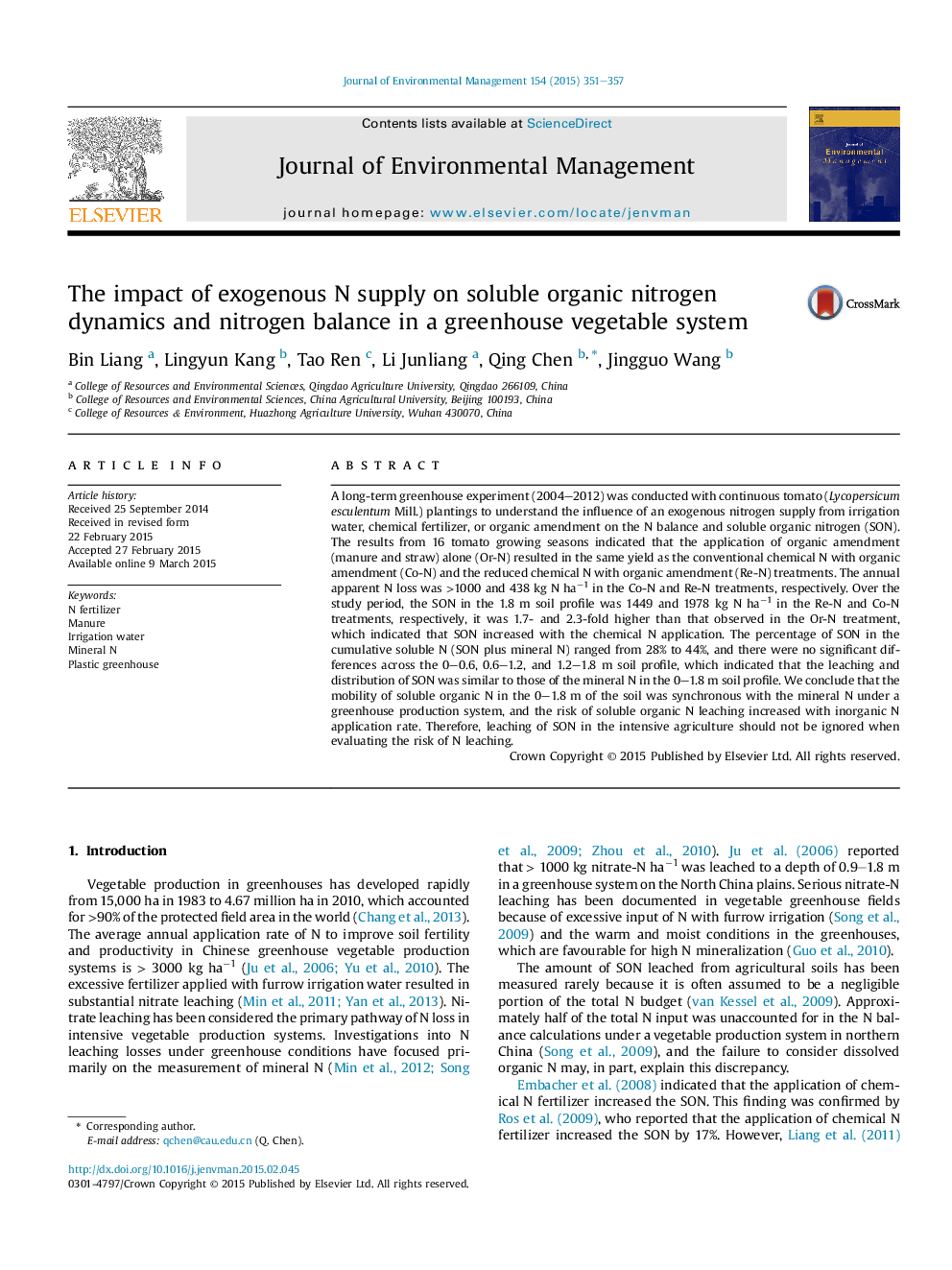| Article ID | Journal | Published Year | Pages | File Type |
|---|---|---|---|---|
| 7482590 | Journal of Environmental Management | 2015 | 7 Pages |
Abstract
A long-term greenhouse experiment (2004-2012) was conducted with continuous tomato (Lycopersicum esculentum Mill.) plantings to understand the influence of an exogenous nitrogen supply from irrigation water, chemical fertilizer, or organic amendment on the N balance and soluble organic nitrogen (SON). The results from 16 tomato growing seasons indicated that the application of organic amendment (manure and straw) alone (Or-N) resulted in the same yield as the conventional chemical N with organic amendment (Co-N) and the reduced chemical N with organic amendment (Re-N) treatments. The annual apparent N loss was >1000 and 438 kg N haâ1 in the Co-N and Re-N treatments, respectively. Over the study period, the SON in the 1.8 m soil profile was 1449 and 1978 kg N haâ1 in the Re-N and Co-N treatments, respectively, it was 1.7- and 2.3-fold higher than that observed in the Or-N treatment, which indicated that SON increased with the chemical N application. The percentage of SON in the cumulative soluble N (SON plus mineral N) ranged from 28% to 44%, and there were no significant differences across the 0-0.6, 0.6-1.2, and 1.2-1.8 m soil profile, which indicated that the leaching and distribution of SON was similar to those of the mineral N in the 0-1.8 m soil profile. We conclude that the mobility of soluble organic N in the 0-1.8 m of the soil was synchronous with the mineral N under a greenhouse production system, and the risk of soluble organic N leaching increased with inorganic N application rate. Therefore, leaching of SON in the intensive agriculture should not be ignored when evaluating the risk of N leaching.
Related Topics
Physical Sciences and Engineering
Energy
Renewable Energy, Sustainability and the Environment
Authors
Bin Liang, Lingyun Kang, Tao Ren, Li Junliang, Qing Chen, Jingguo Wang,
